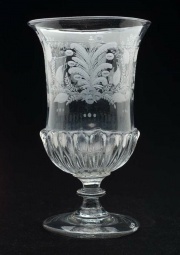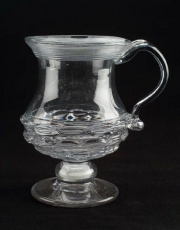Difference between revisions of "Flint glass"
Jump to navigation
Jump to search
m (Text replace - "== Authority ==" to "== Sources Checked for Data in Record ==") |
|||
| Line 11: | Line 11: | ||
[[File:1995.765-SC41941.jpg|thumb|]] | [[File:1995.765-SC41941.jpg|thumb|]] | ||
| + | ==Physical and Chemical Properties== | ||
{| class="wikitable" | {| class="wikitable" | ||
|- | |- | ||
| Line 23: | Line 24: | ||
|} | |} | ||
| − | == | + | == Resources and Citations == |
* G.S.Brady, ''Materials Handbook'', McGraw-Hill Book Co., New York, 1971 Comment: p. 383 | * G.S.Brady, ''Materials Handbook'', McGraw-Hill Book Co., New York, 1971 Comment: p. 383 | ||
Revision as of 15:22, 25 August 2020
Description
An optical quality glass with a high refractive index and low dispersion. Flint glass is a Potash-lead glass used for optical lenses and crystal glassware.
See also crystal.
Synonyms and Related Terms
cristal de chumbo com potássio (Port.)
Physical and Chemical Properties
| Melting Point | 630 (softens) |
|---|---|
| Density | 3.05 |
| Refractive Index | 1.560 |
Resources and Citations
- G.S.Brady, Materials Handbook, McGraw-Hill Book Co., New York, 1971 Comment: p. 383
- Walter C. McCrone, John Gustave Delly, The Particle Atlas, W. McCrone Associates, Chicago, IV, 1972
- Susan E. Schur, Conservation Terminology: A review of Past & Current Nomenclature of Materials, Technology and Conservation, Spring (p.34-39); Summer (p.35-38); Fall (p.25-36), 1985
- Dictionary of Building Preservation, Ward Bucher, ed., John Wiley & Sons, Inc., New York City, 1996

